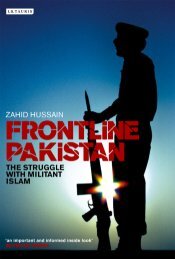Who Owns Pakistan - Yimg
Who Owns Pakistan - Yimg
Who Owns Pakistan - Yimg
Create successful ePaper yourself
Turn your PDF publications into a flip-book with our unique Google optimized e-Paper software.
companies, management was to be transferred to a strategic investor,<br />
preferrably a foreign multinational after it acquired 26% of stakes.<br />
The formula for handing over the management to private owners, acquiring 26%<br />
stakes was criticized by both the national and international press. It was argued<br />
that the method of handing over the control of an undertaking to an individual or<br />
group, upon their acquiring 26% of equity is extremely suspect, since the normal<br />
corporate practice was to pass on the control, at the purchase of 51% of shares.<br />
" It could be that it has been made easy to facilitate the purchase of<br />
what one might the whole of <strong>Pakistan</strong>" an article by I A Hussan, in<br />
daily The News of Islamabad of June 2,1991 observed.<br />
The formula also provided that Employees Buyout will have 10% preference over<br />
other bidders and that the workers of the privatized units will have a right to<br />
Golden Handshake whose cost would be equally shared by the Privatization<br />
Commission and the new owner. It was this corrupt formula which facilitated<br />
bogus employees buyout and the sale of the family silver at throwaway prices to<br />
the favourites.<br />
It was hammered by Finance Minister Sartaj Aziz in his speeches and press<br />
conferences that in respect of industrial units, banks and utilities, even after<br />
privatization government would retain between 49 to 74% shares and would thus,<br />
benefit from dividends in profits of these companies resulting from the efficiency<br />
of the private sector. The hollowness of this argument and craftiness of the<br />
privatization formula is evident from the fact that the first unit privatized in 91 i.e<br />
Muslim Commercial Bank has built hefty reserves but not announced a single<br />
dividend during last seven years, thus depriving the government which still owns<br />
49% equity, of its shares in profit. Some of the most profitable units like National<br />
Fibres, Zeal Pak Cement, Pak-China Fertilizer and five of the six privatized<br />
engineering units stand closed because they were bought politically influential<br />
and unscrupulous element to strip these units of their assets and not to improve<br />
their operational efficiency.<br />
How Privatized Units are Evaluated, Priced?<br />
We have stated above that valuation is the most important step in the whole<br />
process of privatization because it helps the Privatization Commission in putting<br />
a price tab on the units marked for privatization, by determining the reference<br />
price below which the unit would not be sold. This fact is also vouched by a<br />
booklet, Privatization in <strong>Pakistan</strong>, published by the Privatization Commission in<br />
1998. While talking about the process of valuation of the assets and setting up a<br />
reference price for units to be privatized, it observed that " This (valuation) is<br />
perhaps one of the most important steps in the process of privatization."<br />
35













